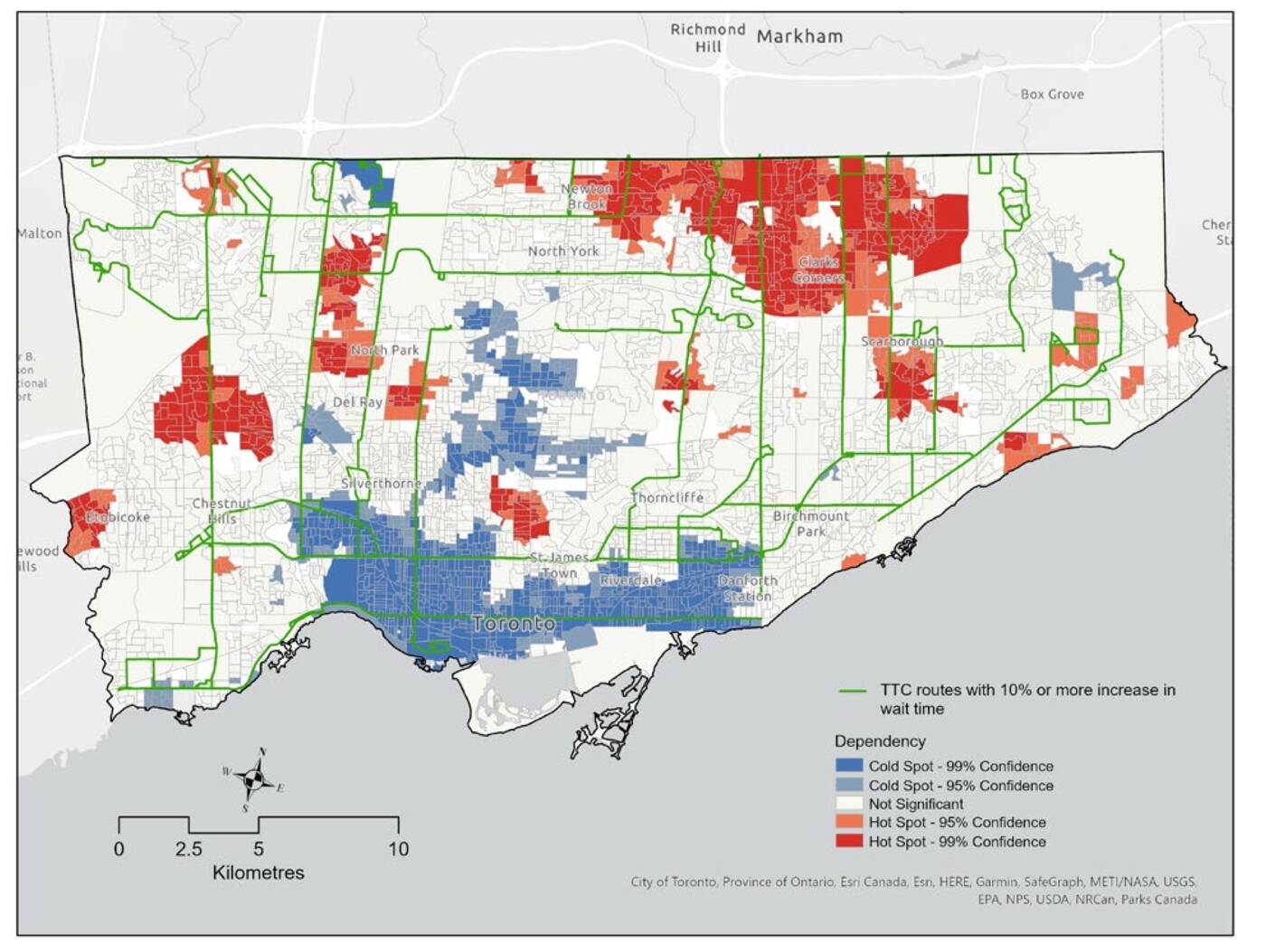
TTC service cuts will disproportionately affect marginalized areas of Toronto
A new research study confirms that the TTC service cuts set to be implemented this month will disproportionately impact marginalized areas of Toronto.
The research, led by Dr. Raktim Mitra of TransForm Lab at Toronto Metropolitan University, found that the majority of routes that will experience 10 per cent or greater cuts to service will run through areas with high concentrations of marginalized groups.
The TTC revealed that in its first phase of the 2023 Service Alignment plan, service changes will occur on 39 routes, which represents 20 per cent of all TTC routes in the city.
Phase 1 is set to be implemented on March 26, 2023.
Over the past few weeks, transit advocates and researchers have raised concerns over the impact of service cuts on marginalized populations in Toronto, who may greatly depend on public transit for their daily needs.
"Lower-income people, those with precarious employment, new immigrants, and older and younger people often depend on public transit for their everyday needs, compared to less deprived groups for whom public transit may sometimes be a choice," the report reads.
The study found a correlation between the locations of reduced TTC services and the hot spots of materially deprived neighbourhoods.
In fact, 26 of the 28 — or 93 per cent — of the TTC routes that will experience at least a 10 per cent increase in wait times run through or connect to a community with high material deprivation.

Hot spots of material deprivation in relation to TTC routes facing service cuts. Source: Raktim Mitra, Tess Peterman - TMU
Most of these affected areas are located in the east and west ends of the city, and further service reductions will continue to make these areas less accessible, according to the report.
The study also found that 22 of 28 — or 79 per cent — of the TTC routes that will experience at least a 10 per cent increase in wait times go through or connect to a neighbourhood with high-level dependency.

Hot spots of dependency in relation to TTC routes facing service cuts. Source: Raktim Mitra, Tess Peterman - TMU
These include areas where there is a high concentration of older adults, children, and individuals who do not have income from employment.
According to the study, the majority of these communities are located in the northeast and western parts of the city, which already have to battle poor transit accessibility.
The report also confirmed that 24 of the 28 — or 86 per cent — of the TTC routes that will experience at least a 10 per cent increase in wait times go through a neighbourhood with a high level of ethnic concentration.
"These neighbourhoods may not generate the highest amounts of public transit trips, but residents in these neighbourhoods may be more dependent on public transit for their everyday needs compared to other parts of the city," the study says.
"The proposed service changes by the TTC will likely make these neighbourhoods more mobility poor, creating additional barriers to the residents' participation in employment, education, and society in general."
Latest Videos
Latest Videos
Join the conversation Load comments







